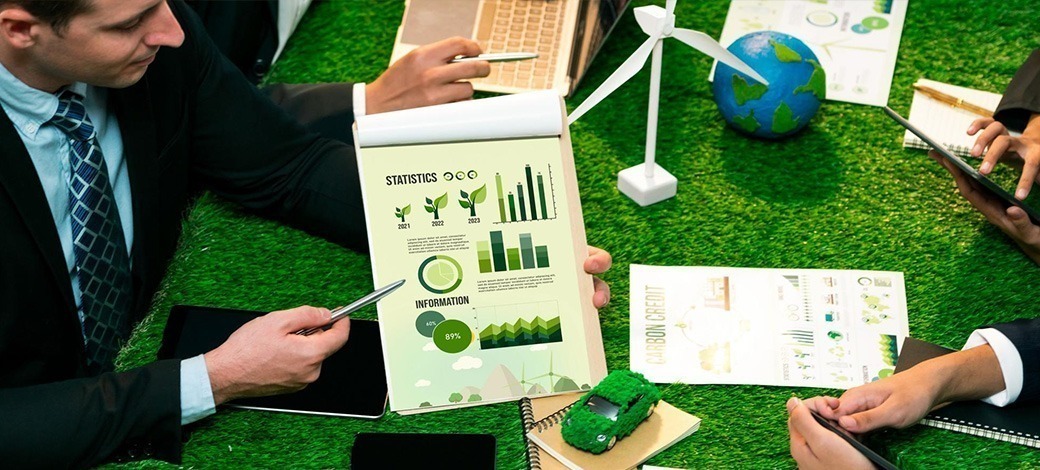Insights > Client Alerts
Client Alerts
Law regulating Brazil’s carbon market is sanctioned
December 13th, 2024

On December 12, 2024, President Luiz Inácio Lula da Silva sanctioned Law No. 15,042, which regulates the carbon market in Brazil, creating the Brazilian Greenhouse Gas Emissions Trading System (“SBCE”).
The new law provides for greenhouse gas (GHG) emission limits and the trading of assets representing GHG emissions, reductions, or removals – in line with the Brazilian National Policy on Climate Change (“PNMC”), governed by Federal Law No. 12,187/2009.
The SBCE, provided for by Law No. 15,042, will function in compliance with the “cap-and-trade” system – already known in other sectors, such as the Californian market (in the US) –, which regulates GHG emissions by establishing an emission ceiling for different sectors of the economy that receive or purchase permits (within the established ceiling). These permits can be traded when, for example, those responsible for the facilities and GHG emission sources (operators) reduce or exceed the established emission limits.
In this case, the operator issuing GHGs below the established limits can sell their permits proportionally to the reduced emissions, while the operator exceeding the limit can purchase them, also proportionally to the amount emitted in excess.
This system’s governance will count on the Inter-ministerial Committee on Climate Change (“CIM”), the SBCE’s managing body, and the Permanent Technical Advisory Committee.
Federal Law No. 15,042/2024 frames activity operators within the new obligations provided towards reducing or offsetting GHG emissions – without distinguishing sectors (except for primary agribusiness production). The measures to be complied with by these operators vary according to the amount of annual emissions, specifically:
- More than 10 thousand tCO2e/year: Requires compliance with reporting obligations.
- More than 10 thousand tCO2e/year and up to 25 thousand tCO2e/year: Requires submission, to the managing body of the SBCE, of a plan for monitoring emissions and annual reports on GHG emissions and removals.
- More than 25 thousand tCO2e/year: Requires submission of annual reports on regular compliance with obligations, in addition to the obligations mentioned above.
The SBCE is divided into the following phases:
- Phase I: 12-month term, extendable for another 12 months, for publishing Federal Law No. 15,042/2024, counted from the entry into force of this regulation.
- Phase II: One-year term for implementing instruments aimed at reporting emissions by operators.
- Phase III: Two-year term, in which operators will be subject only to the duty to submit a monitoring plan and report on GHG emissions and removals to the SBCE’s managing body.
- Phase IV: Effectiveness of the first Brazilian National Allocation Plan, including the unencumbered distribution of Brazilian Emissions Quotas (“CBEs”), and the implementation of the SBCE’s asset market.
- Phase V: Full SBCE implementation, by the end of the first Brazilian National Allocation Plan.
Brazil’s Federal Government will issue permissions, called Brazilian Emission Quotas (“CBEs”), defined as “fungible, tradable assets, representing one ton of equivalent carbon dioxide emission right (1 tCO2e), granted by the SBCE’s managing body, whether free of charge or not, to the facilities or regulated sources”.
Operators issuing GHGs above the authorized ceiling must purchase CBEs or Certificates of Verified Emissions Reduction or Removal (“CRVEs”). The CRVEs are defined as “fungible, tradable assets, representing the effective reduction of GHG emissions or removals, amounting to one ton of equivalent carbon dioxide (1 tCO2e), following an accredited methodology and registered with the SBCE, in compliance with a specific act of the SBCE’s managing body”.
The maximum emission limits have not yet been set. They will be provided for in the Brazilian National Allocation Plan, which must also include:
- Other regulations on CBEs amount and allocation method among operators;
- The maximum percentage of CRVEs admitted to the SBCE;
- The management and operationalization of asset price stabilization mechanisms; and
- Criteria for transactions, among other specifications.
Regarding the voluntary carbon market, Federal Law No. 15,042/2024 introduced important regulations, such as the possibility of integrated operations with the regulated system. Thus, carbon credits arising from the voluntary market can migrate to the SBCE, provided that they meet specific criteria.
Federal Law No. 15,042/2024 also addresses the method of taxing assets (CBEs and CRVEs) and carbon credits. It also provides new possibilities for generating carbon credits in Permanent Preservation Areas, Legal Reserves, and Conservation Units.
As for the International Transfer of Mitigation Results (ITMO), Federal Law No. 15,042/2024 assigns the authorization competence to the designated national authority. However, adjustments will be needed in the national emission inventory, including that CRVEs must be tracked by the SBCE. Additional definitions on these transfers will depend on the CIM drafting a regulation, considering the multilateral regime on climate change as well as Brazil’s international commitments.
Demarest’s Environmental and ESG team is monitoring this topic and is available to provide additional information and clarifications.
For more information, access Federal Law No. 15,042/2024.
Related Partners
Related Lawyers
Isabelle Carvalho Gonçalves
Laura Bianchini Leite
















